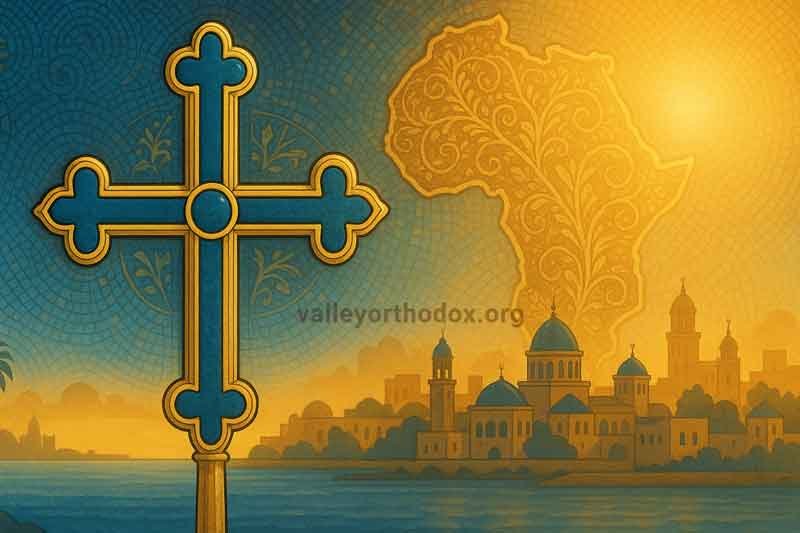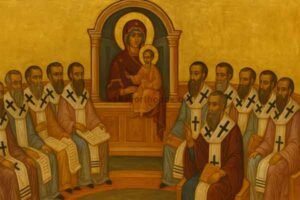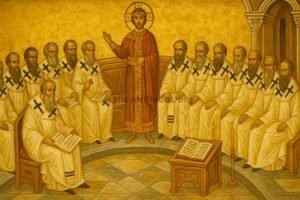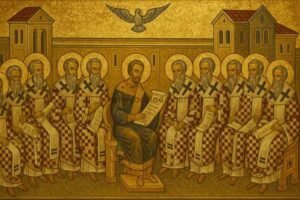The Orthodox Church of Alexandria stands at the crossroads of Scripture, philosophy, and mission. From the apostolic witness of St. Mark to today’s continent-wide pastoral work, the Greek Orthodox Patriarchate of Alexandria and All Africa has carried a distinctive Alexandrian voice into the life of the Church: rigorous teaching, decisive conciliar leadership, and a living tradition of prayer and service.
Apostolic Foundations
St. Mark and the earliest Christian community
The Alexandrian Church traces its beginnings to St. Mark the Evangelist, whose preaching formed a community known for catechesis and martyrdom. Early Christians in the metropolis lived their faith amid intellectual ferment, trade, and periodic persecution, shaping an identity both biblical and missionary.
Martyrs and the shaping of identity
Witness under pressure forged Alexandrian spirituality: fidelity to Christ, clarity of teaching, and pastoral endurance. The memory of martyrs remained a touchstone for later struggles over doctrine and practice.
Scripture, Learning, and the Alexandrian School
Exegesis, philosophy, and catechesis
Ancient Alexandria was a center of learning. The catechetical school developed a disciplined approach to Scripture—uniting literal reading with theological interpretation—to form clergy and laity alike. Philosophy served the Gospel, sharpening argument and clarifying doctrine.
Figures and texts that informed Orthodoxy
Alexandrian teachers argued for a coherent vision of salvation rooted in the Incarnation: the Word truly becomes flesh, and humanity is healed and elevated in Christ. This intellectual heritage prepared the Church to meet future controversies with depth as well as zeal.
Controversies and Councils
Arius and Nicaea (325): defending the divinity of the Son
The Arian crisis arose within Alexandria’s orbit. The First Ecumenical Council at Nicaea confessed the Son as consubstantial (homoousios) with the Father, safeguarding Christian worship and baptismal faith.
Athanasius: exile, return, and Nicene perseverance
St. Athanasius of Alexandria became the face of Nicene orthodoxy, enduring repeated exiles yet returning to shepherd his flock. His pastoral tenacity and theological clarity secured the creed for subsequent generations.
Cyril and Ephesus (431): Theotokos affirmed
Under St. Cyril of Alexandria, the Council of Ephesus affirmed the Virgin Mary as Theotokos (God-bearer), safeguarding the unity of Christ’s person. Alexandrian theology here served the entire Church by articulating how salvation depends on who Christ is.
After Chalcedon (451): Parallel Lines in Alexandria
Shared roots, distinct hierarchies
Following the Council of Chalcedon, Alexandria witnessed the emergence of parallel ecclesial structures. The Greek Orthodox (Chalcedonian) hierarchy and the Coptic Orthodox (non-Chalcedonian) hierarchy share apostolic roots and a wealth of common piety, while proceeding along distinct theological and canonical trajectories.
Points of convergence and enduring differences
Both communities revere Scripture, the Fathers, monastic life, and the sacraments. Their sustained dialogue in recent decades reflects a desire to understand historical disagreements while honoring shared faith.
Monasticism and the Desert Legacy
Nitria, Scetis, and Wadi el-Natrun
The deserts of Egypt—Nitria, Scetis, and Wadi el-Natrun—nurtured cenobitic and eremitic life that shaped Christian spirituality far beyond Egypt. The rhythm of psalmody, fasting, obedience, and manual work formed a school of sanctity whose influence persists.
Anthony, Pachomius, and lasting models of community
St. Anthony exemplifies the solitary’s struggle and joy; St. Pachomius organized communal monastic life. Alexandrian bishops drew strength from these wellsprings of prayer, and monastic centers became engines of pastoral care, education, and charity.
Liturgy and Parish Life
Rite, language, and hymnography
Today the Greek Orthodox Patriarchate of Alexandria celebrates the Byzantine rite (Liturgies of St. John Chrysostom and St. Basil), served in Greek, Arabic, and local African languages where appropriate. Chant, iconography, and processions fuse catechesis with beauty, forming the faithful through the Church’s calendar and sacraments.
Feasts, saints, and local devotional practice
Alexandria’s liturgical year honors gospel events and regional saints, joining the faithful to the one mystery of Christ. Parish life extends worship into charity, catechesis, and family devotion.
Under Changing Empires
Late Antique and Byzantine eras
Alexandria contributed decisively to doctrinal clarity and ecclesial organization across the Eastern Roman Empire, providing bishops, theologians, and monastic models to sister churches.
Arab and Ottoman periods: communities and privileges
Under successive administrations, the Church navigated new civic realities while maintaining worship and community life. Legal frameworks varied, but pastoral service and education continued.
“And All Africa”: Modern Mission and Expansion
Dioceses across the continent
In the modern era the Patriarchate’s title—“of Alexandria and All Africa”—reflects evangelization, pastoral care, and education across North, East, Central, and Southern Africa. Clergy formation, translations of liturgical texts, and social ministry accompany parish planting and monastic foundations.
Education, philanthropy, and evangelization
Schools, clinics, and charitable initiatives embody the Church’s commitment to serve neighbors through tangible works of mercy, grounding mission in worship and doctrine.
Governance and Ecumenical Relations
Patriarch, Synod, and diocesan structure
The Church is led by the Patriarch of Alexandria and All Africa together with the Holy Synod of bishops. Metropolises and dioceses coordinate pastoral work, catechesis, and mission in diverse languages and cultures.
Relations with sister Orthodox Churches and others
The Patriarchate participates in pan-Orthodox cooperation and theological dialogue, bearing an Alexandrian perspective to common concerns: evangelization, catechesis, and witness in the public square.
Heritage: Churches, Art, and Manuscripts
Notable churches and architecture
Historic cathedrals and parish churches—marked by icons, relics, and careful liturgical arrangement—embody a theology of space ordered to prayer. Architecture frames proclamation, sacrament, and charity.
Icons, metalwork, and manuscript traditions
Iconography, liturgical vessels, and manuscript culture testify to a refined Alexandrian sensibility: beauty at the service of truth, and craftsmanship that teaches faith.
Timeline & Quick Reference
- 1st c.: Preaching of St. Mark; formation of the Alexandrian community.
- 3rd–4th c.: Catechetical school; martyrdoms; growth of monastic life.
- 325: Council of Nicaea—divinity of the Son confessed.
- 328–373: St. Athanasius defends Nicene faith through exile and return.
- 431: Council of Ephesus—Theotokos affirmed under St. Cyril.
- 451: Council of Chalcedon; subsequent parallel hierarchies in Alexandria.
- Modern era: Title expanded and mission articulated as “and All Africa.”
FAQs
Who founded the Orthodox Church of Alexandria?
Tradition identifies St. Mark the Evangelist as founder and first bishop.
What does “and All Africa” mean in the Patriarchate’s title?
It signifies the Patriarchate’s pastoral and missionary responsibility across the entire African continent.
How is the Greek Orthodox Patriarchate related to the Coptic Orthodox Church?
Both share apostolic roots in Alexandria. Since 451, they have maintained distinct hierarchies and theological trajectories, while sharing deep reverence for Scripture, the Fathers, and sacramental life.
Which liturgy is celebrated today?
The Patriarchate ordinarily celebrates the Byzantine rite (St. John Chrysostom/St. Basil), served in Greek, Arabic, and local languages where pastoral need dictates.



